The LM5050 is NOT the device to use in your application, at least not in the configuration you show.
The LM5050 is designed principally to reduce the losses of a diode (in an OR'd power supply) by shorting out the body diode of the FET. The circuit with two LM5050 is essentially a diode OR of the two power supplies and the highest voltage will always provide a conduction path as long as it is higher by more than the body diode Vf.
The predicate for using this circuit configuration is that one power supply fails or is not present and the other is used. For example if selecting between a wallwart power supply and a battery voltage where the battery is discharged the system prevents the wallwart power supply feeding back into the battery system with no charge current control).
If the two power sources are regulated power supplies then you could indeed use the On/OFF signals to change between the power supplies. Under these circumstances (supplies less than 600mV difference) this will work.
To make your requirements work where the voltage from the Wallwart is less than the voltage from the battery you need a P-FET device in series with the battery supply LM5050 output.
Perhaps something like the circuit below might work for you:

simulate this circuit – Schematic created using CircuitLab
In the circuit above the following assumptions are made:
- The battery voltage can go above the Wallwart voltage
- The wall wart voltage will NOT go above the battery voltage by more than 600mV. If it does then you'd need a P-chan FET in the Wallwart path.
- The battery voltage won't go below the Wallwart voltage by more than 600mV. If it does then you need a P-chan FET in the Wallwart path.
If the operation is that you plug the Wallwart in to power the device and charge the battery, then the circuit shown may work for you.
